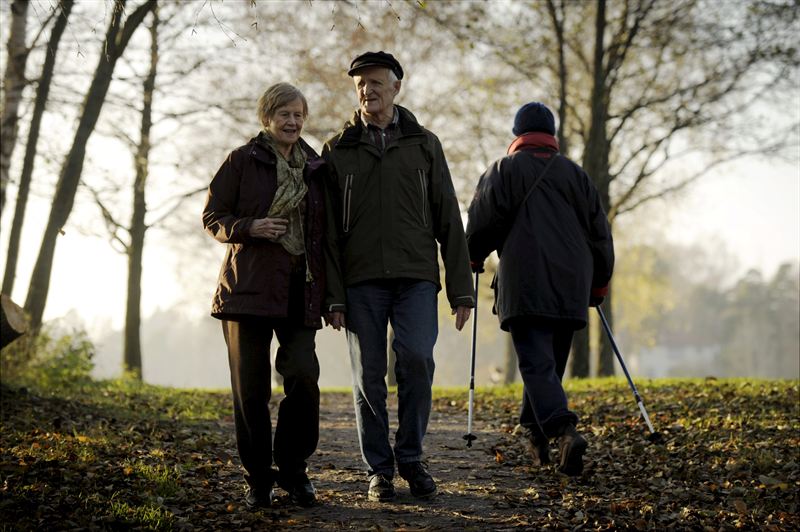YIT Live Bee Cam offers a glimpse of the life in a beehive
YIT CORPORATION News, April 19, 2016 at 9:45 a.m.

In Finland, most people prefer to live in their own home for as long as possible. It is also the best alternative from the perspective of the national economy. To reach this goal, we need new housing solutions.
Citizens over 65 years old are hardly a uniform group. The group is called by many different names, which is one sign of the diversity of its members.
“We talk about senior citizens, the elderly, the aged, or the older generation. And we all have a different idea of what these words mean,” states Mikko Lempinen, YIT Property Development Director.
There are equally many terms for the housing solutions targeted at the elderly. In senior and assisted living facilities, the inhabitants have homes of their own, allowing them to live independently. The housing services include individually agreed services ranging from housekeeping to healthcare. When the need for care is greater, enhanced or supported assisted living services are available. These services include service centres, group or nursing homes and assisted living facilities. In addition to municipalities, housing solutions are increasingly often provided by private companies, foundations and other organisations.
The million apartment challenge
Finland is aging rapidly. In fifteen years, one fourth of the population will be over 65 years old.
“Most of us want to live at home. In comparison to institutional care or assisted living, it is also less expensive for municipalities,” says Sari Hosionaho from the Ministry of the Environment. Hosionaho works as the coordinator of a development project targeted at allowing everyone in Finland to continue living at home for as long as possible.
According to the goals of the project, by 2030 at least 92 per cent of all citizens over the age of 75, and everyone younger, should be living at home. Reaching this goal requires taking several measures. According to Hosionaho, the quality of the housing stock and different housing solutions are essential for enabling the elderly to live at home. The most extensive of the tasks required is making apartments accessible, safe and functional. One million accessible apartments will be needed. Currently, only one third of these apartments are available. New construction projects cover another third, and the rest will need to be accounted for through renovation projects.
Life-cycle housing as the key
Hosionaho points out that any home should make a good life possible and allow well-being for its residents in all stages of life.
Mikko Lempinen from YIT agrees. It is necessary to consider the entire housing stock instead of constructing homes only for the elderly. The senior citizens’ apartments built in accordance with the YIT assisted living concept have the appearance of common high-quality apartments. After a closer look, you will notice that from the front door to the bathroom furniture, particular attention has been paid to accessibility and safety. Persons using a walker or a wheelchair will find the premises easy to move in. The worktops are lower than usual, and the furniture can be adjusted.
YIT has long-term experience of implementing assisted living solutions for consumers and B2B care operators, both in rental and owner-occupied housing. According to Lempinen, the attitude towards housing solutions targeted at senior citizens has clearly become more positive in the past years. The need for these solutions is immense, and there is no longer time to wait. Authorities, service providers and the residents themselves have become aware of this. In the end, the responsibility and the power over the matter rest in the hands of the senior citizens themselves. In Finland, the strong tradition of do-it-yourself has kept the service concepts from becoming more common. Older generations are not used to purchasing services. Hosionaho believes that this attitude is changing. In the future, even the elderly will be more willing to make use of external help, which will allow them to live at home longer than before.
TERMINOLOGY
Know your terms: Housing for the elderly
Life-cycle housing: the apartment is constructed by taking into account the different needs of residents of different ages and capacities, with a focus on accessibility, adjustment flexibility and communality.
Nursing/service home: the residents receive around-the-clock care and various recreational activities are available. Maintained by private service providers.
Third age: the period of life between working life and old age. Often a period of personal freedom.
Municipal assisted living facility: meant for residents who need 24/7 enhanced care and who cannot survive at home with home care services.
SAS: a placement working group for senior citizens’ services (SAS translates as “clarify-assess-place”) Senior citizens’ apartments: independent living for persons over 55 years old; between ordinary apartments and assisted living facilities. The residents can purchase different types of services. Both rental and owner-occupied apartments. Private operations.
Enhanced home care: healthcare services provided at home, such as care for the elderly. Usually temporary.
Old people’s home: a nursing or group home or an assisted living facility providing long-term care and day centre activities.
Private assisted living facility: supported assisted living, meaning that the employees are only available during the day. The care is based on a doctor’s statement. Assisted living apartments are available for renting and for sale.
Communal housing: new types of communal living (such as senior villages and housing blocks).
Accessible social and service facilities and various activities targeted at senior citizens.
For further information, please contact:
Hanna Malmivaara, Vice President, Communications, YIT Corporation, tel. +358 40 561 6568,hanna.malmivaara@yit.fi



